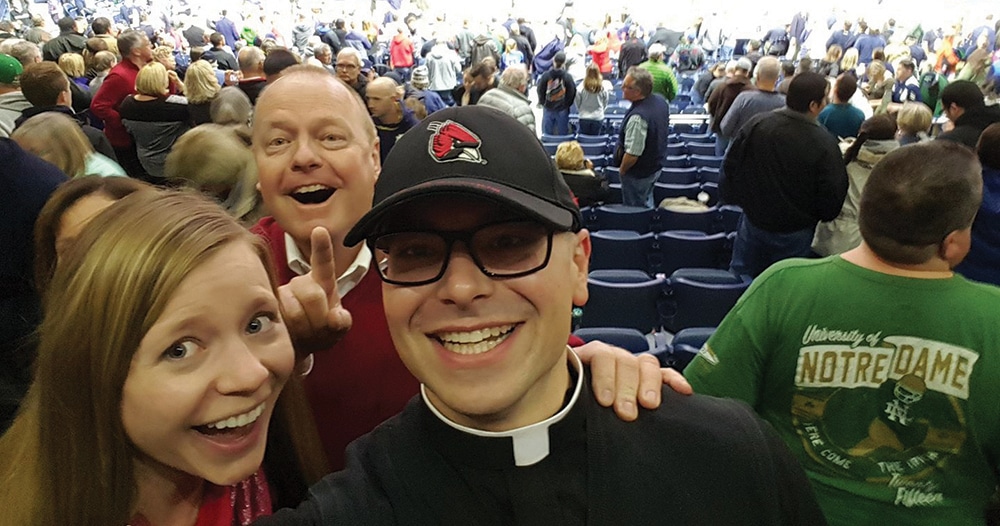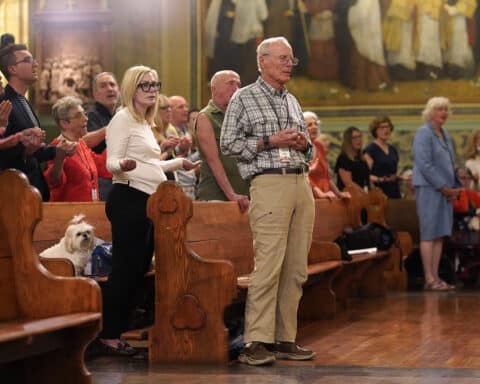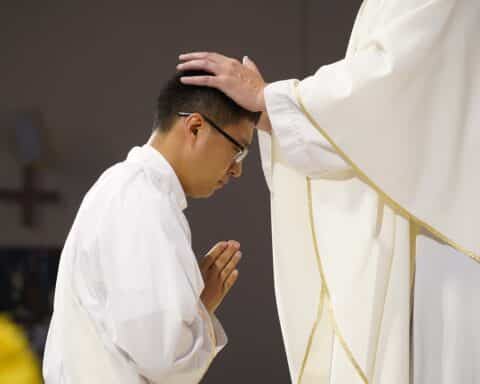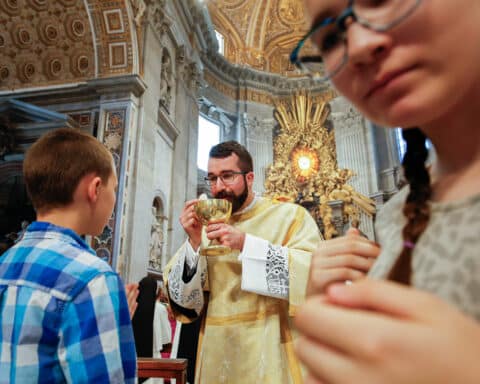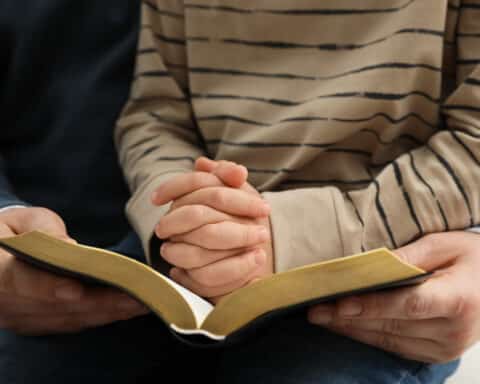One of the things a seminarian looks forward to the most as they move through the process of studying for the priesthood is wearing the Roman collar. It is an outward manifestation of our love for Christ and belief in his Church. Like the wedding ring, it is a statement of who we are and to whom we belong. However, nothing prepared me for the first few weeks of wearing the collar in public.
The first thing I was unprepared for was how much my face would hurt. Why? When you are a priest you have to smile at everyone. It is exhausting. You are the face of the Church and to many the face of Jesus, which means people need to see the love of Christ through me. This is true of every Christian to be sure, however, when you are wearing the external manifestation of a man configured to Christ, it becomes doubly important. I was unprepared with how much people looked to the priest to experience love.
The second thing I was unprepared for was the amount of questions we get. The question I get most often is, “Is that uncomfortable?” referring to my collar. It really isn’t at all, and I’ve become so used to it that not wearing it feels odd. In fact when I don’t have it on, I feel almost guilty, like a man without his wedding ring. Why? My whole life is dedicated to making Jesus Christ known, loved and served. When I wear the Roman Collar, the simple act of walking down the grocery aisle has the possibility of reminding people of Christ’s presence in the world. Are there times that I would love to just throw on a hoodie and jeans so that I don’t have to smile at everyone or talk to the random passersby? Yes! However, each time that temptation comes it is normally met by my realization that my whole life is about witness, and each time I wear the collar the Lord puts someone in my path that needs that reminder of the Lord’s presence. Do I always have to wear my clerics? No. When I go to the gym or my parent’s house or the beach, I don’t dawn ‘the blacks.’ But each time that choice is before me I think about the fact that it is truly a choice: to give witness to Christ through external and real symbols or not.
Finally, I was most unprepared for the reactions people have to the Roman collar. They generally fall into three categories. The first (and most expectant) is the peaceful welcome. When most people see priests, they are happy, comforted or give a generally positive response to their presence. This I was expecting; the next two came as a puzzlement and shock.
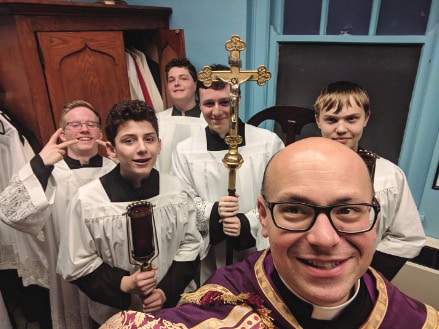
The second category is that of bewilderment. This is manifested by either a curious gaze, awkward stare or pointing accompanied by giggles. Growing up Catholic I was used to seeing priests and religious. However, as the United States has become less and less “churched,” most people have little experience with clergy in general, much less Catholics. Being the object of curiosity takes some getting used to. This is where a smile of kindness and a well-placed hello can go a long way. Hopefully, they might even be brave enough to ask us what we are, thus leading to an opportunity for evangelization.
Lastly, and most traumatically, what I was unprepared for was being met with disgust, derision or even hatred. It took time to realize that this had nothing to do with me. The collar I wear represents the Faith and the Church, both with which it is possible to have negative experiences. As a result, the priest often becomes the target for those feelings, many of which are warranted. A priest who lacked charity or, heaven forbid, abused their power and influence with regards to these people is normally the source of this reaction. As I have gotten used to this, I now pray: “Lord, give me an opportunity to set it right and apologize for whatever wrong they experienced.”
To conclude, I have two experiences that sum up the joys and pains of being a tangible representative of the Church through wearing the Roman Collar. The first will always haunt me, and the second will give me the courage to dawn the collar every day of my life.
The first happened just months ago as I was walking and a person pointed me out to their friend saying, “look, there’s one of those pedophiles, watch your kids.” I wanted to do several things at that point: punch him, sink into the ground and die, and/or weep. As a priest I will pay for the sins of my brothers. It’s unfair, but that is what Christ did for us, so how can I complain?
The second experience was in Mexico. As I walked down the street in my cassock, an old woman approached me weeping and grabbed my hand to kiss it. I couldn’t understand what she was saying until someone translated for me. She said, “The last time I saw a priest with the courage to wear that in public he was being gunned down in the street, thank you, thank you!” She was speaking about the Cristero War — war for Christ the King — in Mexico during the 1920s where dozens of priests were martyred. It takes courage to mark yourself as different in the world, but the Lord gives us such love as to make the yoke easy and the burden light (especially when the love we receive is normally in the form of food).
Father Jacob Meyer is a priest for the Diocese of Fort Wayne-South Bend, Indiana.

